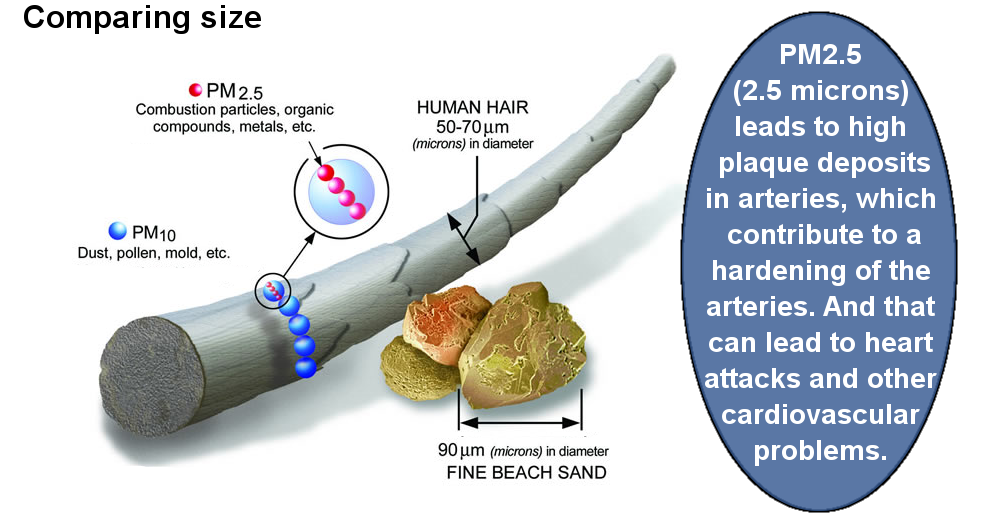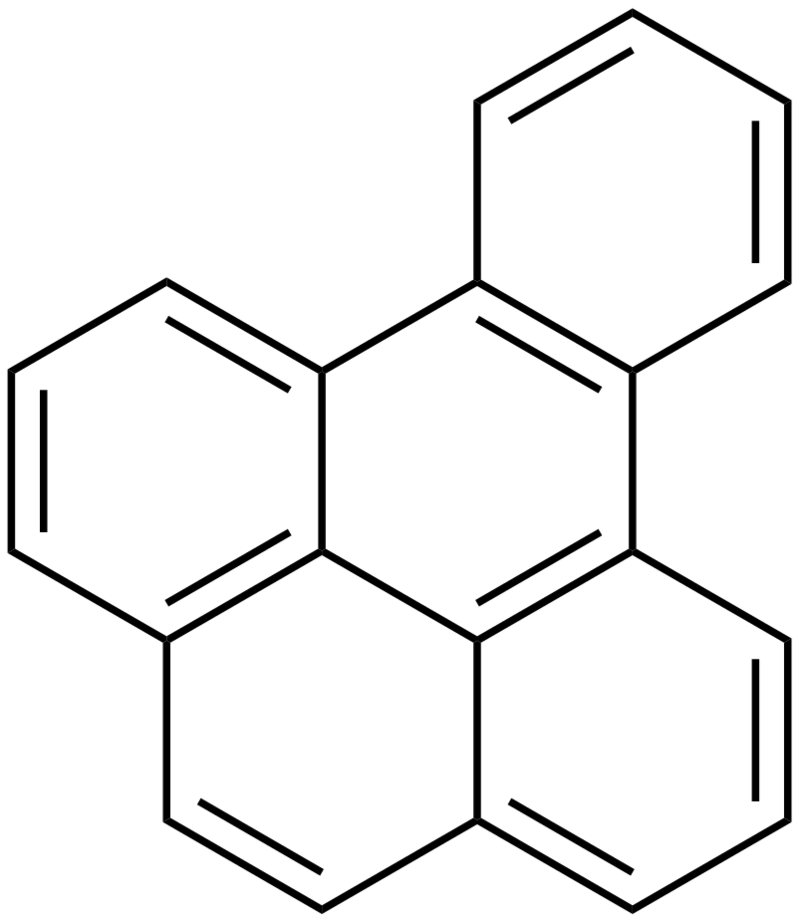It isn’t necessarily the dust you can see that can cause the most severe health issues, it is microscopic dust that is smaller than the eye can resolve that is now linked to a number of ailments of not just the respiratory tract, but also cardiovascular disease.
Why is this?
Because larger particles such as PM10 or 10 micron particles which fall into the COARSE size range dust particles (2.5 microns – 10 microns) as defined by the EPA:
- Fall to the ground much faster (within minutes) instead of staying airborne for days or longer where they can be inhaled such as is typical of smaller particles. This also means that smaller particles can travel much further from the source. (such as combustion products from a road or highway)
- The bodily defense mechanisms of mucus and cilia which are designed to trap larger particles and move them up and out of the lungs do not defend as well against smaller particles as they can bypass these systems and make their way progressively further down into the respiratory system.
However, the smaller PM2.5 particles which fall into the FINE size range (0.5 – 2.5 microns) are:
- Sufficiently small particles of a few microns or less in diameter which can actually bypass the para-cellular (between the cells) junctions of the epithelial cells in the lung air sacs, which means they can go deep enough into the human respiratory system to pass DIRECTLY into the bloodstream.
- Prone to stay suspended for much longer periods of time (hours, days, weeks) and can travel a longer distance from the original source.
- Not easily filtered out by the body’s natural defenses due to their small size.
- And if these particles are of a chemical nature, (such as aggregated / adsorbed VOCs, heavy metals, etc.) then toxic damage can occur. If they are of a more inert nature, they can still cause damage by nucleating deposits in arteries.
For an idea of how small these particles are in relation to familiar objects such as hair and sand, here is an illustration.

PM2.5 Particle Scale and Effects Indoor Air Quality – microns are abbreviated as um or micrometers
Some of the worst air quality readings I get are inside of expensive homes that look immaculate, (because the larger, visible dust particles have been cleaned up) but still do not adequately filter out the more dangerous smaller suspended respirable particles. (SRP)
UltraFine particles (UFP) are in the nanoscale range of 100 nanometers or less (0.1 microns) just below the PM2.5 FINE particle size range and they can penetrate though the membranes of cells and migrate to distant organs such as the brain. An example is Diesel Particulate Matter (DPM) which are essentially soot (carbon) but with carcinogens such as benzopyrenes adsorbed onto the particle which makes it a potential physio-chemical toxin. Benzopyrenes are considered harmful because they can intercalate (insert themselves) in between the nitrogeneous bases of DNA and thereby interfere with self-replication and protein production by transcription errors.

Chemical Structural Diagram of Benzo(e)pyrene (a VOC)
Ambient Air Pollution and Risk for Ischemic Stroke and Transient Ischemic Attack (TIA)
